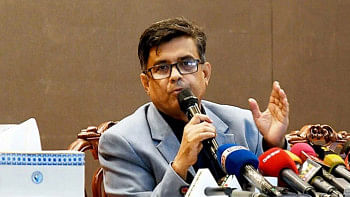Brihatta’s quiet revolution in Hazaribagh

Essentially a research-based, artist-run, non-profit organisation, Brihatta Art Foundation has worked in Dhaka for quite some time. With an objective to integrate locals in community development, they have given the people of Hazaribagh greater accessibility to art and culture.
"Literally anyone can walk in to take part in the creative endeavours we offer, from a man who pulls a rickshaw, children of the slums, madrassa children, to a tea vendor," says Bishwajit Goswami, co-founder of Brihatta.
Goswami is a firm believer that art is not for elites to enjoy alone. "Aesthetics," he adds, "have no language or class!"
The Foundation connects diverse voices across borders between artists, craftsmen, local and expat community members, and global practitioners to bring artworks closer to the real world.
"Focused on creating and curating art within the public domain, we offer residencies, exhibitions, and community engagements," Bishwajit Goswami adds.

Currently, the foundation is focused on the exhibition and the book launch ceremony of their two-year cultural initiative that focuses on the legacy of the Buriganga River.
"Gangaburi: The River Heritage Project" is one of their endeavours that explored the interdependence of the river and this city through artistic interventions, archival research, and community engagement.
Celebrating the relationship between Buriganga and Dhaka, the project has reconnected citizens with the river's ecological, historical, and cultural significance.

With Gangaburi art-based research publication launch on 25 April at Goethe-Institut Bangladesh, and an exhibition -- "Paal: Moving through memories, myths, & motion" at Brihatta Art Space in Hazaribagh, they celebrate an ongoing relationship and experience of the communities living and working along the Buriganga River in Old Dhaka.
The exhibition -- set to run between April 25 and May 2 -- pins a powerful image of the interconnectedness of communities living along the Buriganga, the people, and the ecology in time. At the same time, it gives one a different look at Hazaribagh!
Meaning "A Thousand Gardens", the locality is notorious for its industrial leather manufacturing units and tanneries that have long suffocated the river and the surrounding environment. The stench, the filth, and the tannery waste have made the community almost unliveable, yet in this ruin stands the sprawling green art space.
Brihatta (which means immensity) has a garden of all white flowers, herbs, and other green plants. They have intentionally planted white summer flowers; the garden is filled with the fragrance of jasmine and frangipani. Their crowd puller is the rare Saraswathi Champa, this sweet-scented flower that is in bloom now, attracting visitors from afar and near, and once there, they get to behold aesthetic pleasure through art in the space.
"Nurture art, literature, and culture from within yourself," is what Goswami preaches. He stays tied to his roots with six words that influence his artworks -- Ma (Mother), Mati (earth), Manush (people), Bhasha (Language), Swadesh (Motherland), and Prakriti (Nature) -- allowing him to find his fabled garden in the area.
Acclaimed printmaker Julia Lebrao Sendra's words, "…the courage to love a world in decline", left a profound impact on me. I was struck by this half-sentence and was reminded that all is not lost while visiting the Brihatta Art Foundation, housed inside Mukti Tannery 1 at Hazaribagh.
It is true that everywhere you look, Dhaka bleeds decay. My city is a chaotic disaster, an absolute ruin, and shrouded in greed. Then again, within this sinful decadence, I get to witness the finer nuances of Dhaka and the society at large. Some of us still find ways to create beautiful initiatives like Brihatta Art Foundation, and that's a relief!

 For all latest news, follow The Daily Star's Google News channel.
For all latest news, follow The Daily Star's Google News channel. 



Comments